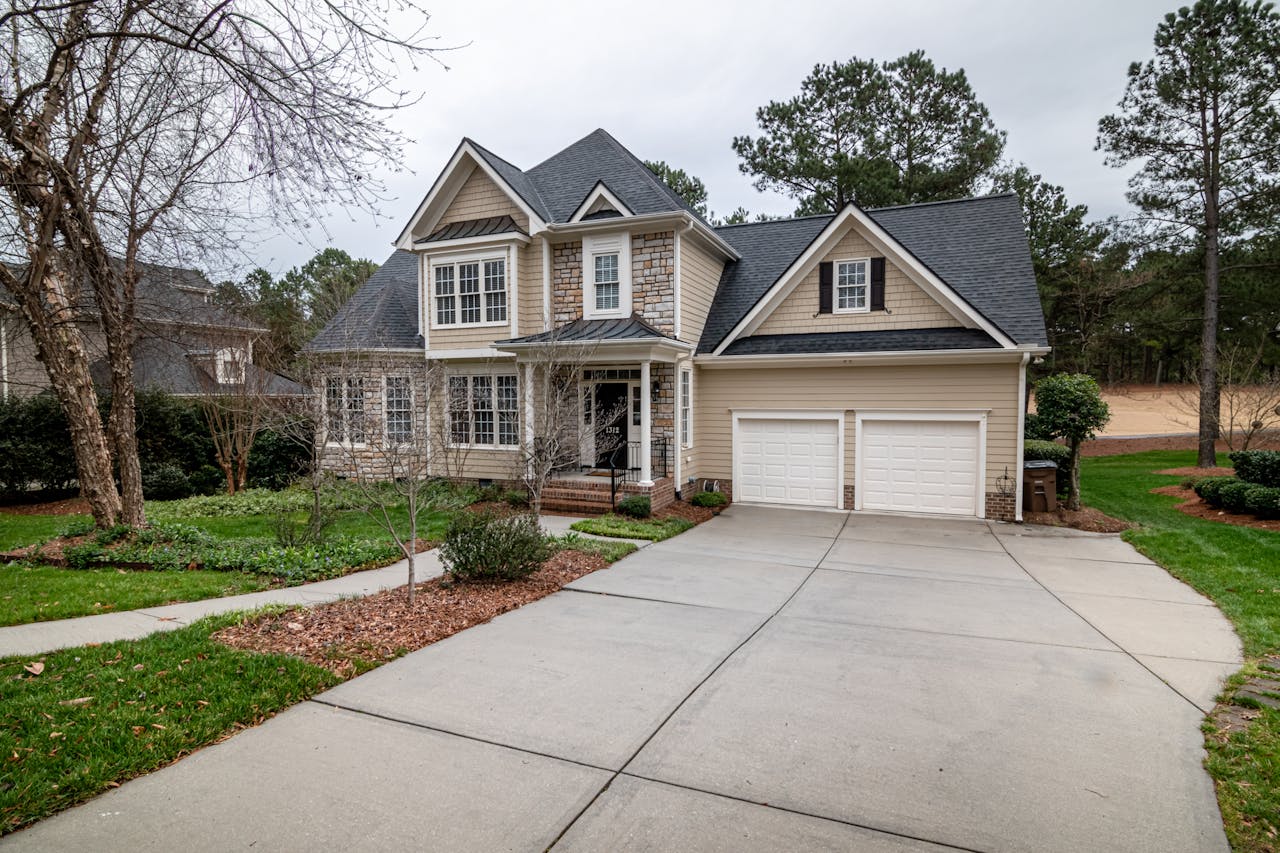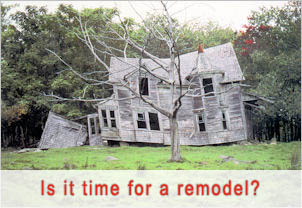
Key Takeaways
- You should have a permit for your garage conversion to abide by local regulations and to make certain that everything is done up to code with rigorous safety guidelines.
- Getting the right permits ensures your home insurance stays protected and you won’t get stuck in expensive liability or coverage fights later.
- A permitted conversion enhances your property’s value, boosts marketability, and stops problems at resale or inspection.
- Careful planning, such as local code research and design assistance from professionals, can help simplify your permit application and approval process.
- Accounting for permit fees, inspections, structural upgrades, and future tax or utility escalations in your budget will prevent you from facing unwelcome surprises during your project.
- By working with knowledgeable professionals and staying in close contact with local officials, you’ll help guarantee your conversion is both safe and legal.
Local codes typically require you to obtain one before work begins, regardless of whether you’re adding bed space, a kitchen, or a bathroom. Permits keep you safe by making you comply with safety codes, adhere to zoning rules, and avoid fines. Other city offices have to review your plans as well for plumbing, wiring, and fire safety, for example. If you neglect this, you can get in legal trouble or have trouble selling your home down the road. Laws vary from jurisdiction to jurisdiction, so consult with your local city or county office to determine the proper procedure. The next section dissects how you can get started and what to watch out for in your neighborhood.
Why A Permit Is Essential
A building permit application for a garage conversion is more than just paperwork; it’s an essential step in ensuring your conversion project complies with regulations, safeguards individuals, and preserves your investment. Without proper permits, you’re inviting legal and financial headaches that can persist for years.
1. Legal Mandate
Permits are a legal requirement for any garage conversion. Local officials put these regulations in place to help maintain consistent and equitable building standards across the board, regardless of where you live. If you begin work without approval, you can encounter big fines and even be compelled to deconstruct modifications at your own expense.
Nearly everywhere has zoning laws that dictate land usage. Even if you bypass the permit, you may be breaking those rules unknowingly. For instance, certain municipalities require you to maintain so many parking spaces on your lot. If you take out your garage without a permit, you could be in hot water. By going through the permit process, you guarantee that your plans conform to local codes regarding such things as wall modifications, window dimensions, and roof work. We review each step to catch issues before they develop into expensive errors.
2. Safety Assurance
A permit signifies your garage conversion is up to important safety codes. They are the ones building inspectors refer to your plans and making sure it’s safe for people to live in. This is important primarily for electrical, plumbing, and fire exits.
You’ll have to install smoke detectors and have well-marked escape routes. These regulations protect you and others in a crisis. Inspectors come by while we work to ensure every phase passes stringent criteria, so you don’t overlook a thing. They verify that the walls, floor, and roof can support the proposed use. For instance, if you want to add a bathroom, the pipes need to be done correctly to prevent leaks or mold. If you bypass the permit, no professional inspects your work, and errors can be hazardous down the road.
3. Insurance Validity
Insurance companies need to see that homework is legit. If you do an unpermitted conversion of your garage, your policy might not cover any damage or injury from the new space. This can be a huge issue if there’s a fire or accident.
You need to inform your insurance company of the modification and present them with the permit. This protects your coverage and prevents claim battles. Otherwise, you might face increased insurance premiums or even lose coverage for the entire home.
4. Resale Value
Buyers verify permits before they purchase. If you didn’t get one, they could walk or pay a lot less. Banks and inspectors frequently turn away unpermitted work.
Houses with permitted improvements sell faster and sell for more. Permits demonstrate that the work was completed properly and is up to code.
Work that’s permitted is simpler to demonstrate and assists you in sales discussions.
No permit, less value.
5. Future Projects
Save your permits for future jobs. A complete history makes new projects easier.
Knowing the regulations now allows you to strategize what’s next. If codes change, your old permits prove you did it right.
Later work–like adding rooms or decks–will go smoother if you follow the rules for your garage.
Plan to avoid new problems.
Common Conversion Types
Garage conversions can satisfy a lot of needs, from extra living space to generating additional income through short-term rentals. However, homeowners must navigate the necessary building permits and permit application processes, as they all have their own rules, permit requirements, and advantages.
Conversion Type | Key Requirements | Potential Benefits |
Living Space | Habitable code, insulation, ventilation, permits | Comfort, property value |
Home Office | Zoning, wiring, lighting, permits | Work-from-home, productivity |
Accessory Dwelling Unit (ADU) | Separate entrance, kitchen, ADU code, permits | Rental income, flexibility |
Workshop | Electrical, ventilation, safety codes, permits | Hobbies, small business use |
Living Space
Many homeowners embark on a garage conversion project, transforming their garage into a living space like a family room or guest suite. This process necessitates obtaining the proper permits and complying with local building codes for habitable rooms. Ensuring sufficient overhead clearance, windows for light and air, and emergency exits is essential. Given that the converted space will be occupied daily, factors like insulation, heating or air conditioning, and fire safety must also be considered.
It’s crucial to examine how the floor plan suits your life. A bathroom or even a small kitchen can add functionality. In urban areas, you might have to demonstrate adequate parking, unless your residence is located close to mass transit. Not only will these steps help you avoid fines, but they will boost your home’s value if you ever decide to sell.
Home Office
A garage becomes a quiet, solid home office. This is great for work-at-home individuals and small business owners. You’ve got to add outlets and reliable high-speed internet, and powerful lights to make the space function for extended hours. There are cities that will make you have a permit, even a home office, if you go from storage to work.
If you’re going to be meeting clients or operating a business out of your home, check the zoning regulations. These can include visitor caps, signage, and parking requirements. Good air circulation is essential, so consider opening windows or installing a vent system. A smartly designed garage office can simplify your work life and strike a healthy balance between home and job.
Accessory Dwelling Unit (ADU)
Converting your garage into an ADU is trickier. It means you include a new in-law apartment, occasionally for rental or relatives. You require an entrance of your own and a full kitchen. ADU local laws are tough, so you have to satisfy all they dictate, from fire exits to plumbing and energy consumption.
Anticipate additional scrutiny and price. Hard costs for construction, appliances, and site work can reach €100,000+. Soft costs, such as design or insurance, can tack on an additional €10,000. Permit fees may be expensive, up to €15,000 in certain cities. Still, a lot of owners experience strong returns through rental income and increased resale value.
Workshop
A garage workshop gets you working on hobbies or side business work. You have to have robust chutes for implements and proper ventilation to keep dust and fumes low.
Keep it tidy to prevent safety issues. Soundproofing is clever if you use noisy instruments.
Consult local codes for safe utilization. Obtain permits if installing large equipment.
The Permit Application Process
Applying for a building permit to convert your garage isn’t simply a formality—it’s a key step in ensuring your garage conversion project complies with all legal and technical requirements. This process safeguards your investment and ensures that your new living quarters are secure, legal, and sanctioned by the local government. Below is an outline of the main steps you will follow during the permit application process.
- Research local zoning laws and building codes
- Develop and finalize design plans
- Gather and prepare all required documents
- Apply and pay fees
- Monitor your application and respond to requests
- Schedule inspections and obtain official approval
Initial Research
Begin by searching for the zoning laws and building permit application requirements that cover your property. It is essential to know if garage conversions are permitted in your area and what the local rules entail—minimum ceiling height, window size, etc. Most local governments post this information online, so skim city or municipal websites or contact their offices directly.
Determine the precise permits required for your conversion project. For instance, converting a garage into habitable space generally requires at least a building permit, and possibly electrical and plumbing permits depending on the extent. If your project exceeds $15,000, a permit application is necessary. Certain jurisdictions require site approval prior to a permit being issued, so verify this upfront to prevent unexpected issues.
Create a list of all the paperwork you require. This typically includes property deeds, site plans, and renovation specifications. Fees are established locally and must not exceed actual costs. By having these details worked out in advance, you don’t get stalled down the road.
Design Plans
You’ll need a very detailed set of design plans for your application. These plans need to detail any and every alteration you intend to make, from structural changes to updates to electrical wiring and plumbing lines. Ensure your projects feature explicit diagrams and material annotations.
Collaborate with credentialed individuals for your schematics. An architect or contractor can assist you in satisfying all of the necessary codes, such as fire safety, insulation, and accessibility. Their experience can assist you in foreseeing any revision requests that may arise during review.
Bring two or three sets of your plans. Most building departments require more than one set – one for their files, one for inspectors, and occasionally one for you to have on site during construction.
Document Submission
Once your plans and paperwork are in order, turn them all in to the right office. This is typically the local building department, but may include a zoning office if site approval is required. Send electronic copies if it’s online, or hand deliver.
Pay all application and review fees upon submission. Quick payment quickens processing. Smaller projects can be issued online instantly for some permits, but complicated conversions may take days or weeks.
Save everything–documents, emails, and receipts–related to your application. Follow the status of your permit, either online or by tracking down the office, to catch any problems early.
Official Review
Once submitted, your application is then under review. They review your paperwork, blueprints, and payments. For bigger projects, anticipate a more intensive review, and be willing to respond to inquiries or supply additional information if requested.
If the city requires additional information or modifications, reply as quickly as possible. Answer delays drag the whole process out or even cause your application to expire. For site approval projects, the city has to release the hold before you get your permit.
If you don’t hear back within the expected timeline—typically a few days for small projects or a few weeks for larger—follow up with the office. The clock on your permit starts once inspections begin, and if you fail to request an inspection within six months, the permit expires.
Final Inspection
Once construction is completed, request a final inspection. This step verifies that all work conforms to your approved plans and local codes.
Prepare for the inspector’s visit by tidying the site and ensuring that all systems—electrical, plumbing, structural—are finished and exposed.
If you make it, you receive a certificate of occupancy or some equivalent. Save this paperwork, along with your inspection records, for your files or if you sell.

Unseen Financial Impacts
Garage conversions can transform your finances in ways that aren’t immediately intuitive. Although the immediate allure of extra living space and increased home value is prominent, a deeper analysis reveals a tangle of garage conversion costs and required building permits that you must evaluate. Here are the most critical financial impacts you should consider.
- A garage conversion can add as much as 80% or more of the project’s cost to your home’s value, so when planned and done well, it’s a smart investment.
- Garage conversions budget for a large price range– from roughly $15,984 to $23,187, depending on your location and local labor rates.
- Permit fees typically range from $1,000 – $1,500, but can go higher if your municipality has stricter requirements.
- Insulation by itself can run you from $2,000 to $6,000, depending on your garage size and the insulation type you opt for.
- If you intend to include a bathroom or kitchen, prices can soar to $50,000+, whereas a simple format might be $12,000.
- Overruns due to contractor backlogs—particularly in urban areas—often extend schedules and budgets past your original estimate.
- Utility bills will inevitably increase with additional square footage to heat, cool, and illuminate.
- Unpermitted work = denied insurance claims, higher premiums, and added risk.
- Local tax laws can reassess your property value and increase your annual taxes.
- Failure to factor in inspection and permit expenses can result in large fines or expensive retrofits.
Property Taxes
A completed garage conversion nearly always equates to a larger property tax bill. Local authorities, who revalue your home when you finish, often result in more taxes each year. This is because of the new living space and the increase in value.
It’s smart to investigate how your local tax office defines and calculates improvements to property. Certain states have harsh policies, and certain states may be lenient. Just get ready for a spike in your property tax bill every year. Consulting a tax pro adds yet another layer of protection, ensuring you’re not caught off guard when the bill comes due.
Home Insurance
Any significant alteration to your residence — say a garage conversion — requires you to take a look at your insurance coverage. Not keeping your provider informed can leave you open to coverage gaps. If you fail to disclose the conversion, they could deny claims if there’s damage, fire, or liability issues.
Unpermitted work makes it even more dangerous. Insurers can deny coverage for repairs or losses — and you could have to pay steeper premiums. Be sure to inform your provider immediately once the project is completed to ensure your coverage remains current and valid.
Utility Costs
Energy expenses increase when you expand your living quarters. More rooms equate to more heating, cooling, and electric usage. These increases can accumulate rapidly.
You can help mitigate these expenses with efficient insulation ($2,000-$6,000) and energy-saving appliances. Monitor your bills closely post conversion. If you notice any unexpected spikes, deal with them early. Even easy things, such as swapping in LED lights or updating window seals, can add up in the long run.
Critical Structural Changes
Critical structural changes are the soul of every garage conversion project. These kinds of changes ensure the space is secure, code-compliant, and suitable for habitation, meeting necessary building permits and zoning restrictions. Without thoughtful planning and modernization, your garage conversion won’t make it past scrutiny or keep anyone safe.
Foundation
Your initial point of inquiry should be the garage foundation. Most garages have cheap slabs that aren’t designed to support a living area. If you notice cracks or shifting, you’re going to require repairs or reinforcements for safety and to comply with building code requirements. Other times, you’re going to have to toss in waterproofing or even a new slab, particularly on older builds or wet zones. This type of work usually requires additional building permits and inspections, which might run $200 to $1,500 just for the paperwork. The real chic fixes can range from $2,000 to $10,000 – depending on what needs fixing. If you’re in an area with unstable soils or if you have a hillside site, garage conversion costs can rise for retaining walls or additional site work. Always include these costs in your calculus from day one.
Ventilation
Well, air flow is crucial in any new digs, especially when considering a garage conversion project. Garages are typically constructed without ample windows or vents, so you might need to cut in new ones or provide mechanical ventilation to meet building permit application requirements. Natural airflow does wonders for air quality and reduces humidity, but if windows or vents are insufficient, you’ll want to install a fan or air exchange system. Local codes tend to dictate aggressive requirements for ventilation, particularly for ADUs. Missing these rules can mean redoing the work later, which becomes expensive, especially when considering the garage conversion costs. Be sure to verify code regulations before beginning, as these vary by city and county.
Insulation
Insulation keeps your new home cozy and energy-wise, especially when considering garage conversion costs. Most garages are minimally or not insulated, so you’re going to need to do it here on the walls, roof, and sometimes floor. Select materials that align with your local energy codes—mineral wool or foam boards, for example, tend to perform well. Think insulation prior to closing up walls, because no insulation or bad insulation translates into higher bills and less comfort down the road. During the winter months, high-quality insulation in cold climates locks the heat inside, reducing heating expenses. Insulation costs are typically minimal about the gains, but if you delay, retrofitting can be difficult and costly.
Egress
You’d better have safe exits in a converted garage to meet building code requirements. Codes need doors or windows huge enough for people to get out of in a fire, and these exits must have unblocked routes to ensure safety. Addressing these permit application details correctly from the beginning prevents headaches during inspections. If you skip or miss a code detail, you risk fines or costly rework, making right-of-way a safety-first priority, not just a compliance issue.
Navigating Local Authorities
Knowing how to navigate local authorities is an important aspect of a garage conversion project. Each city or region maintains different building permit application regulations, departments, and procedures. You have to know who does what, how to contact them, and what to do to keep your project compliant with building code requirements and running smoothly. If you’re lucky enough to be in Minneapolis or wherever, these steps get you working within the system and not getting fined and delayed.
Finding Rules
Initially, consult your city’s website for the necessary building permits and zoning regulations. Many cities, like Minneapolis, provide detailed information online (www.minneapolismn.gov/business-services/planning-zoning/). These regulations will clarify whether you can proceed with a garage conversion, the modifications allowed, and the requirements for aspects like insulation, fire safety, and parking. If the information isn’t available online, visiting your local city office or planning department can be beneficial, as staff can guide you to the correct forms and assist with questions regarding your property.
Attending a local workshop or community meeting can also be advantageous. These events provide excellent opportunities to receive updates, ask questions, and meet officials. In some cities, such meetings occur frequently and are listed on the city’s website (www.minneapolismn.gov/government/city-council/meetings/). Once you gather all the information, summarize the main rules, including the required permit applications, key steps, and any special restrictions in your district, to effectively communicate with your contractor or architect.
Hiring Professionals
Create a contractor checklist. Begin with some garage conversions under your belt, then mix in some local code experience, some great reviews, and some really solid references. Get estimates from a couple of builders/designers. Compare not just price, but what services they offer—some will take care of permits for you, others won’t.
Request to view licensing and previous work. Verify references, particularly from individuals who undertook comparable projects. A pro in your corner will help you stay out of legal trouble, catch problems early, and pass inspections.
Avoiding Pitfalls
A lot of folks just jump through steps or expedite the paperwork. This can result in hefty fines or being compelled to reverse work. Always keep detailed records: emails, meeting notes, and receipts. If an inspector or city official offers advice, take notes. Use your city’s 311 Service Center to report issues or ask for help if something is unclear.
Keep in contact with your contractor and the building inspector. If an issue arises, resolve it immediately. When inspections occur, be present if possible. That way,y you can listen to feedback first-hand and pose direct questions. It establishes trust with officials and can hasten the process.
Conclusion
Financing your garage conversion is a wise decision. A permit protects your project and makes it legal. It demonstrates that your space complies with all local regulations. It may be hard, but it keeps you out of trouble – saving you from fines and long delays. A lot of people skip permits and get stuck down the line. You lose out on increased home value and jeopardize future issues if you sell. A permit assists if your scheme requires major modifications, like tearing down walls or wiring new electrical. Local staff can assist if regulations seem weird or ambiguous. Your project will go smoothly if you begin with the correct permit. Consult your local office before construction. Want more tips or to share your story? Join the conversation below.
Frequently Asked Questions
1. Do You Need A Permit For A Garage Conversion?
Yes, you generally require a building permit application for a garage conversion. Proper permits ensure your conversion project is safe and complies with zoning and building code requirements. Always double-check with local authorities before beginning.
2. What Happens If You Convert Your Garage Without A Permit?
Converting your garage without the necessary building permits can lead to fines, legal complications, or the need to reverse the conversion project. Unpermitted work may lower your property value and create issues when selling.
3. Are All Types Of Garage Conversions Treated The Same By Local Authorities?
No, different conversions, such as a garage conversion to living space or office, can have different building permit application requirements.
4. How Long Does The Permit Application Process Usually Take?
The permit application process may take anywhere from a few weeks to a few months, depending on your location and the complexity of your garage conversion project. Early starts prevent holdups.
5. Are There Financial Impacts Beyond The Permit Fee?
Yes, there can be additional expenses related to the building permit application process. This can range from utility upgrades to paying for inspections or hiring professionals to ensure compliance with construction codes. Budget for it!
6. What Structural Changes Might Require Additional Approval?
Significant modifications — changing walls or windows, relocating plumbing or electrical — may require necessary building permits and inspections. Always check with a professional about permit application requirements before going structural.
7. Who Should You Contact For Permit Requirements In Your Area?
Check with your local building or planning department for necessary building permits and permit application requirements.
Your Dream Home Addition Built By Mares & Dow Construction & Skylights – Let’s Create The Extra Space You’ve Been Dreaming Of
Expand your home’s potential and enhance everyday living with a custom home addition from Mares & Dow Construction & Skylights. With over 40 years of construction experience, we specialize in high-quality additions that seamlessly integrate with your existing structure and lifestyle needs.
Whether you’re planning a new primary suite, second-story expansion, or an in-law unit, we tailor each addition to match your vision, your home’s architecture, and your long-term goals.
Key benefits of our general home addition services include:
• Adding valuable square footage for growing families or multi-use living
• Increasing your property’s value with expert design and construction
• Creating energy-efficient, modern living spaces tailored to your needs
Proudly serving Contra Costa County—including Alamo, Danville, Orinda, Martinez, and San Ramon—Mares & Dow Construction & Skylights is your trusted partner for functional, beautiful, and lasting home additions.
Contact Mares & Dow Construction & Skylights today for a free, no-obligation quote, and let’s build your ideal home addition together.
Disclaimer
The materials available on this website are for informational and educational purposes only and are not intended to provide construction, legal, or professional advice. You should consult with a qualified general contractor or industry professional for advice concerning any specific construction project, remodeling plan, or structural concern. Do not act or refrain from acting based on any content included on this site without seeking appropriate professional guidance. The information presented on this website may not reflect the most current building codes, regulations, or industry best practices. No action should be taken in reliance on the information on this website. We disclaim all liability for actions taken or not taken based on any or all of the contents of this site to the fullest extent permitted by law.







 based on
based on 

